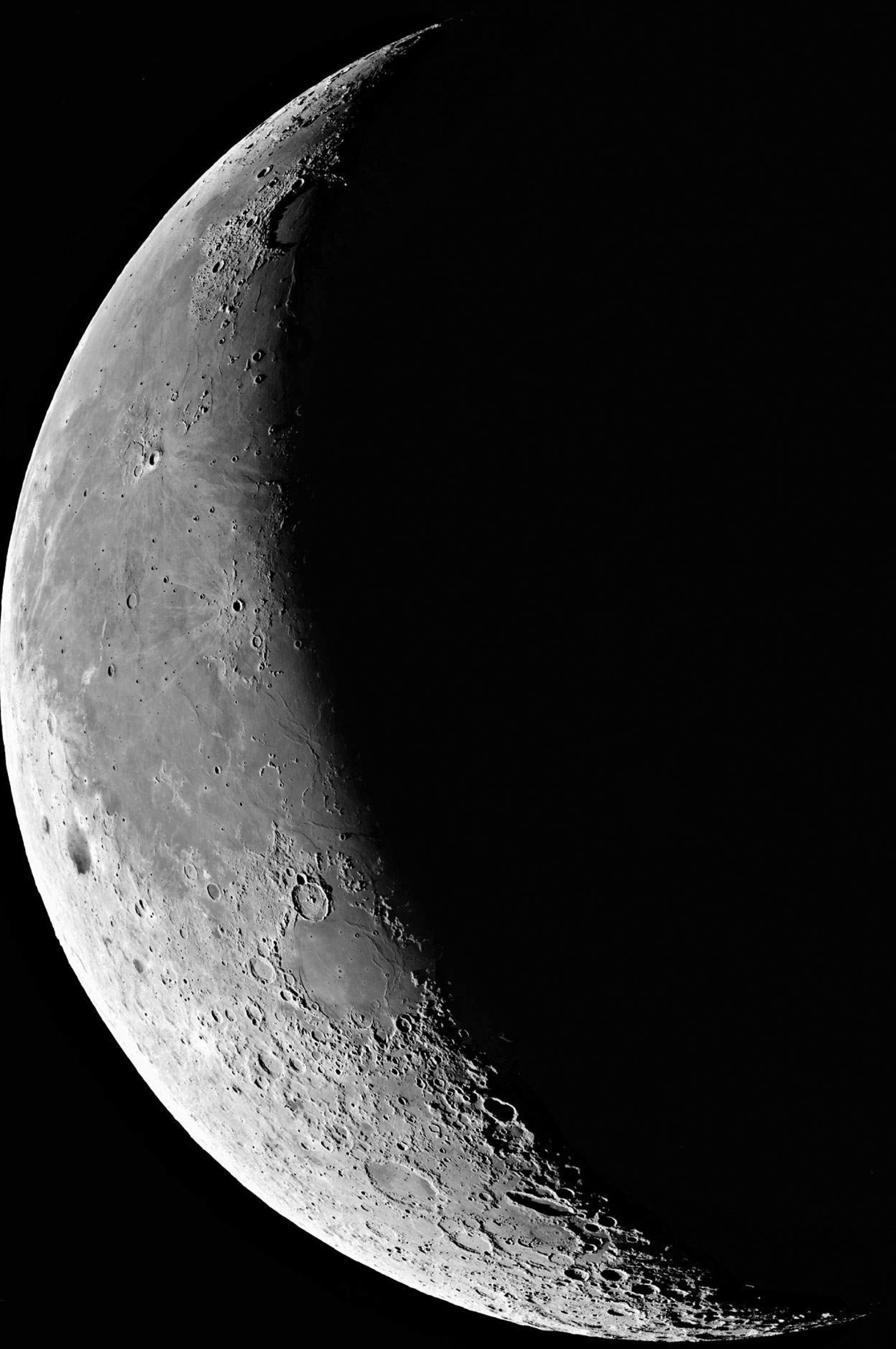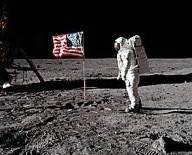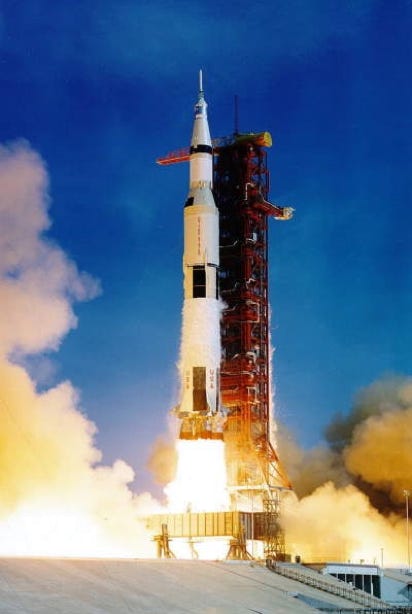

Exploring the Moon
A history of lunar discovery from the first
space probes to recent times
Apollo to the Moon!
Without the political rivalry between the Soviet Union and the United States, the history of space exploration would have been very different. Having seen the USSR put the first satellite into orbit, followed by the first animal and then the first human, President John F. Kennedy looked for the most impressive way in which the United States could beat its Cold War adversaries.
Among the alternatives considered were a space station, a circumlunar trip, and an unmanned landing. In the end, it was decided that only a manned lunar landing would capture the public imagination, and be so far beyond the ability of the Soviet Union at that time that the USA could do it first. In a now-famous speech to the US Congress on 1961 May 25, President Kennedy announced his goal to land a man on the Moon and return him safely to Earth ‘before this decade is out’. It was a breathtakingly ambitious commitment, coming at a time when the only US manned spaceflight experience was a modest 15-minute hop above the atmosphere by Alan Shepard in a single-seater Mercury capsule.
Thus the primary impetus for Apollo was political, not scientific or technical, and it rapidly accelerated developments in space exploration that might otherwise have taken decades to achieve. Left to follow a logical course, NASA might well have chosen first to develop a reusable space shuttle and a space station in orbit around the Earth before eventually striking out for the Moon sometime around the end of the 20th century.
To send humans to the Moon, the United States first had to build the world’s largest and most powerful rocket. They called it Saturn V (for ‘five’). Standing 111 m tall, the three-stage Saturn V, designed by Wernher von Braun and his group at the Marshall Space Flight Center in Huntsville, Alabama, was able to put over 100 tonnes into Earth orbit, or send over 40 tonnes to the Moon.
Three astronauts rode in a conical Command Module, 3.9 m wide at the base and 3.8 m tall. Behind this was the Service Module, a cylinder 7.5m long containing air, water, and power supplies as well as a large engine called the Service Propulsion System (SPS) which was used for making course changes and entering and leaving lunar orbit. Electrical power was supplied not by solar cells but by a type of battery known as a fuel cell, later to be used on the Space Shuttle, which produces drinkable water as a by-product.
Atop its launch rocket the Apollo spacecraft was surmounted by an escape tower which would have pulled it clear in case of an emergency. This tower was jettisoned once the Saturn rocket was safely in flight.
Tucked away under the Command and Service Module (CSM) during launch was the craft that would actually make the lunar landing: the spidery Lunar Module (LM). Once the third stage of the Saturn V had fired to put them safely on their way to the Moon, the astronauts turned the CSM to dock with the LM and extract it. Once in orbit around the Moon, the two astronauts who were to make the landing entered the LM through a docking tunnel in the Command Module’s nose, leaving their companion in charge of the CSM.
The LM consisted of two halves: the four-legged descent stage, with a large engine for controlling descent to the Moon, and the upper stage containing the two astronauts. The two astronauts took off again from the Moon in this top half (called the ascent stage), using the lower stage as a launch pad.
After a series of four manned test flights, including a dress rehearsal in lunar orbit by Apollo 10 which simulated a full mission in all but the landing, the stage was set for the final fulfilment of President Kennedy’s challenge. Apollo 11 would land men on the Moon in July 1969.
Apollo to the Moon!
Liftoff! Apollo 11 heads to the Moon
